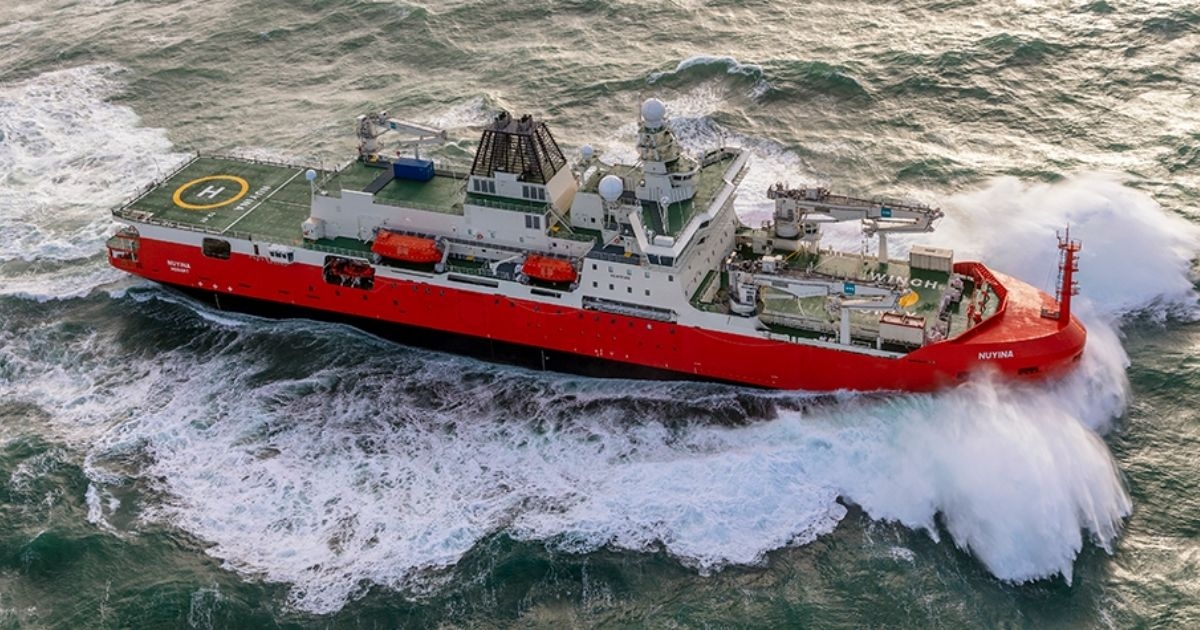Bakker Sliedrecht Supplies Electric Hybrid Propulsion to Research Vessel

Five years after Damen Shipyards Group began construction, the new Antarctic Supply & Research Vessel (ASRV) Nuyina for the Australian government has arrived at its home port of Hobart in Tasmania.
Bakker Sliedrecht supplied the flexible electric propulsion for the special vessel, enabling the Nuyina to sail both electrically and in hybrid modus and break through the Antarctic ice at full power.
The icebreaker’s task includes scientific research around the South Pole and delivery of personnel, cargo and equipment to and from the Antarctic and subantarctic stations. It will also be deployed as rescue vessel in case of emergency response, disaster relief, evacuations or pollutant contamination incidents and as a patrol vessel. It has its own research laboratory, can carry 1200 tons of cargo and can accommodate 150 people. The Nuyina can sail in temperatures of forty degrees below zero and break through 1.65 meters thick ice at a speed of three knots. The name Nuyina is the Tasmanian Aboriginal word for southern lights.
Multi purpose Hybrid propulsion
Bakker Sliedrecht supplied the engineering of the electric propulsion. The vessel sails through vulnerable natural areas. Hence, the impact on the environment had to be as good as zero. That is why a hybrid electric propulsion has been chosen. This means that the vessel can sail on its diesel engines, its electric motors or both. The hybrid propulsion enables the Nuyina to sail in different modes. It can sail entirely on diesel to get from A to B as quickly as possible. Fully electric for quiet and economical sailing or on a diesel engine and an electric motor, where the other diesel engine generates energy. In the icebreaker mode, the diesel engines as well as the electric motors and thrusters can be used at full power. In DP mode, those thrusters hold the ship in position.
Supply electric propulsion and training Australian crew
Bakker Sliedrecht supplied four water-cooled frequency drives that can be deployed multifunctionally, for the two propulsion motors 3700kW each or for the three thrusters with 1300kW electric motors at the stern, three thrusters with 1300kW electric motors for the bow and two transformers for the Power Take Off/Power Take In system. (PTO/PTI). This generates power for propulsion as well as for other purposes, such as on-board voltage. The thrusters are used for both propulsion and the Dynamic Positioning (DP) system that keeps the ship in position. Bakker Sliedrecht provided trained the Australian crew to help them getting to know the installation and to operate all the modes of electric propulsion. Due to the corona measures, the training was given online.
Technical challenges of the project
From the first application in 2013 to completion in 2021, Bakker Sliedrecht was directly involved in every phase of this complex project with its expertise. “The vessel had to be able to sail under very difficult circumstances and heavy weather conditions. It also needed a hybrid propulsion. That made it technically very complex and the project very challenging,” says project manager Arie de Jong of Bakker Sliedrecht. “That is reflected in the construction time. We received the first order in 2016 and it was delivered in the summer of 2021. However, the Nuyina has become a state-of-the-art ship with unique features. We as Bakker Sliedrecht and its project team are proud of that.”

